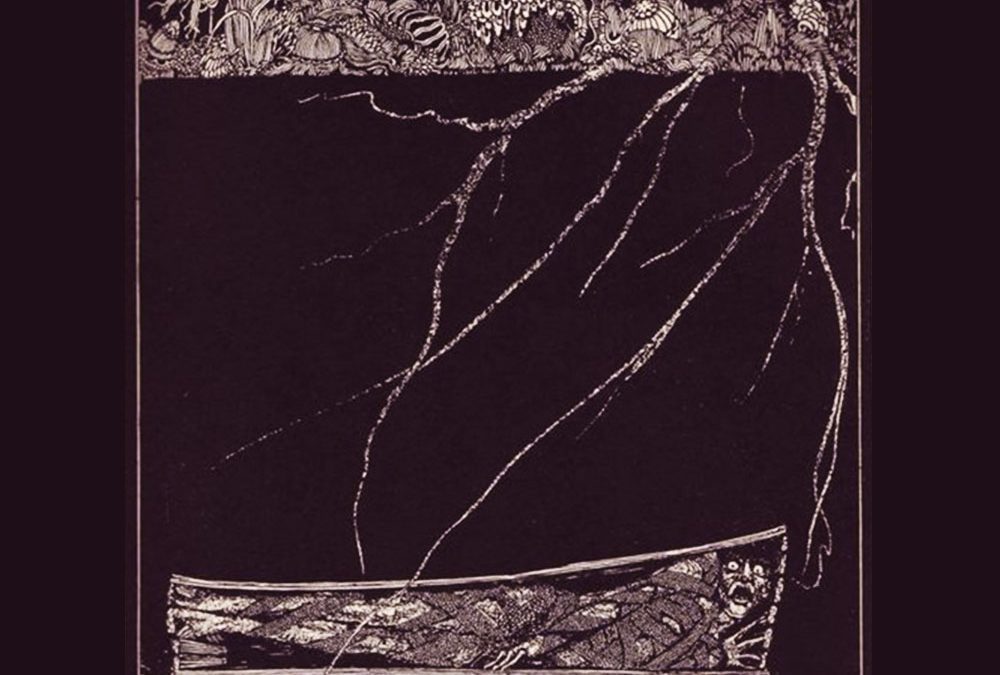Depicting ‘Tree’, an illustration for Edgar Allan Poe’s story The Premature Burial by Harry Clarke, published in 1919.
“I wrote ‘Tree’ when The Goths were only one rehearsal away from going separate ways”.
“‘Tree’ was the last song I wrote before we split. It ended up me performing and recording it, a solo effort. In the studio, I made a change on guitar to give it more ‘a wan and ghostly gleam’”.
The Goths last jam session was early in 1993. At the time, Dream-pop bands, like Mazzy Star and Cranes were making moves on the charts.
Ghost Story
“The story came while I was digging through an old library newspaper. It was all to do with a ghost, far back, a century at least, on a haunted hill. It was all about vast crowds that would gather to get a glimpse of this ghost, after the newspaper ran the story. I wanted to write around the story, where the subject is the beginning, with some old wives-tale of having felt, or even seen, a ghost”.
The recollection, a description from back then, had it as ‘ten feet tall’. The ghost, it was said, disappeared into a tree. The song was written from the approach of the feelings of someone possibly experiencing this kind of a place.
“Tree’ took its cue from writers like Richard Davis and Tony Birch, styles that sketched out a context with which spin these sorts of yarns. The thing I wanted to convey in the song was that, and you see this a lot in Warwick Thornton’s work, something might be revealed.”
“Kate Grenville’s literature too mirrors white Australia’s painful efforts to come to terms with the ghosts of its colonial past, and this all ties together. What you find in ‘Tree’, on the other hand, is the effect that some places in the landscape can have on any one individual.”

